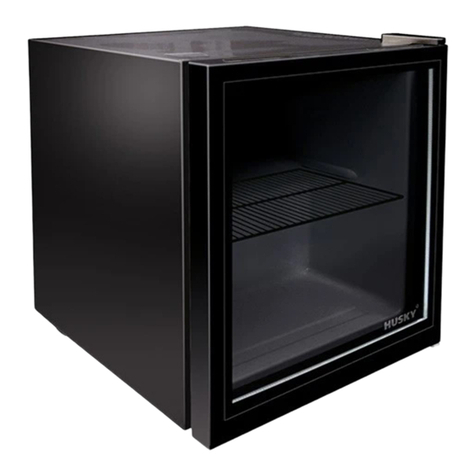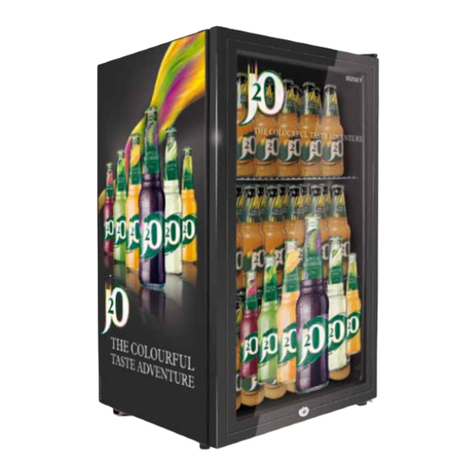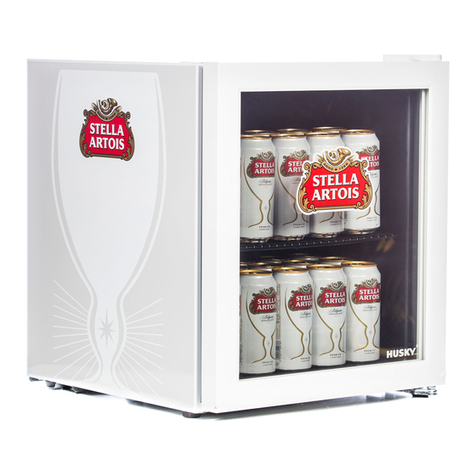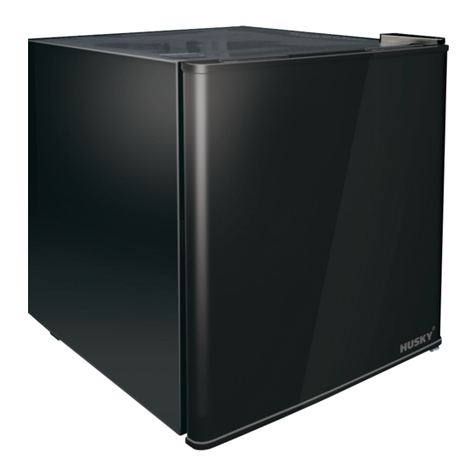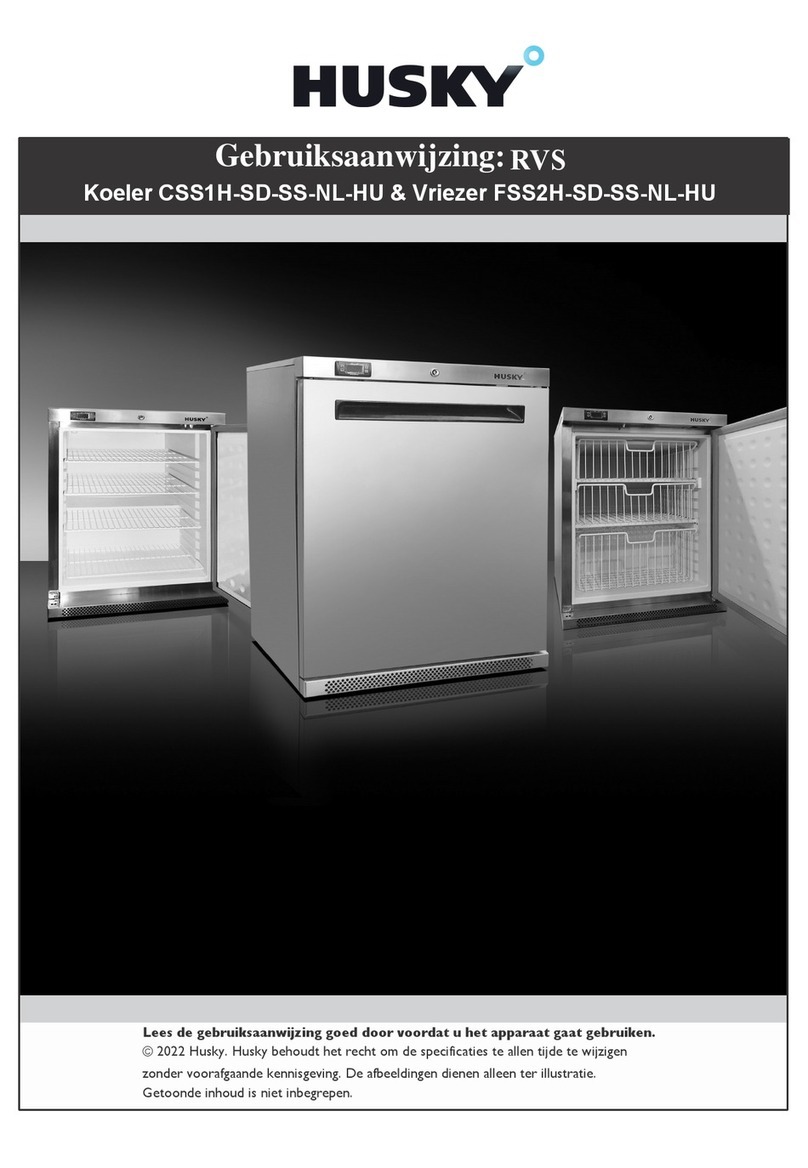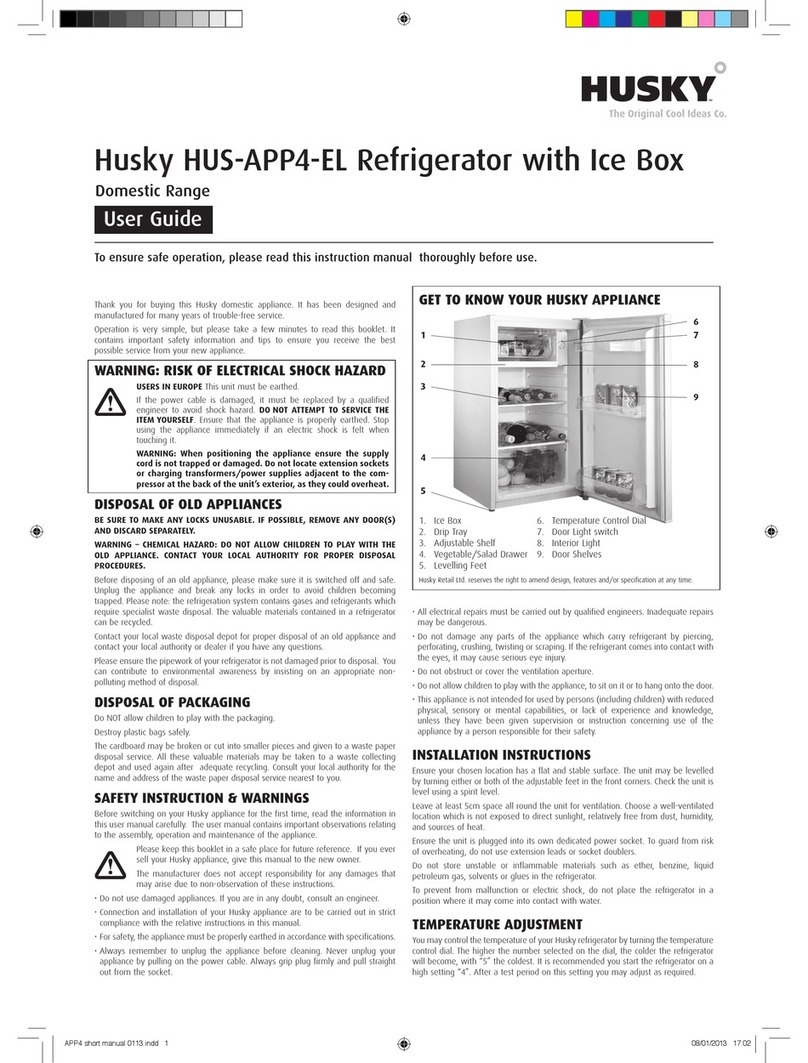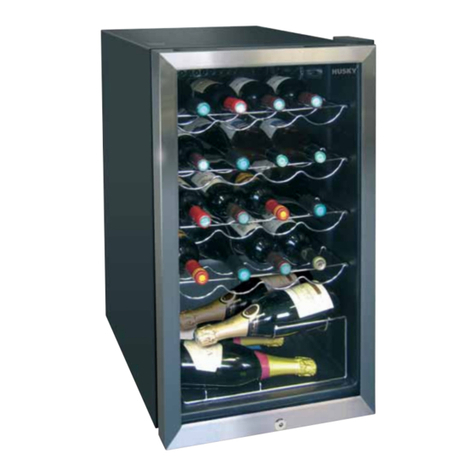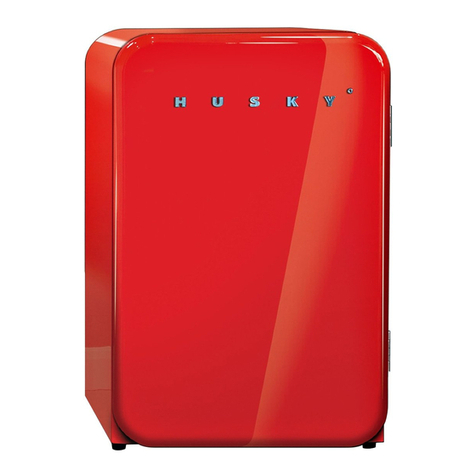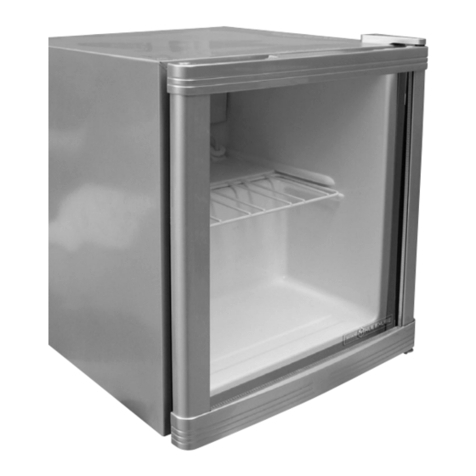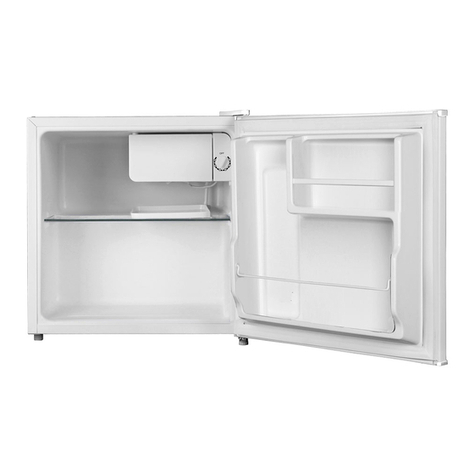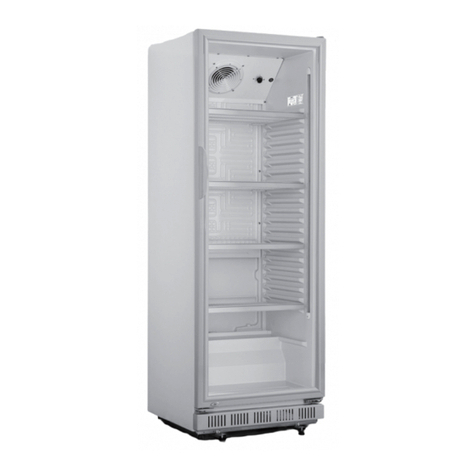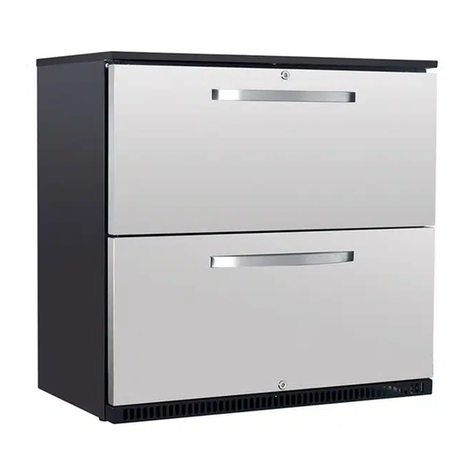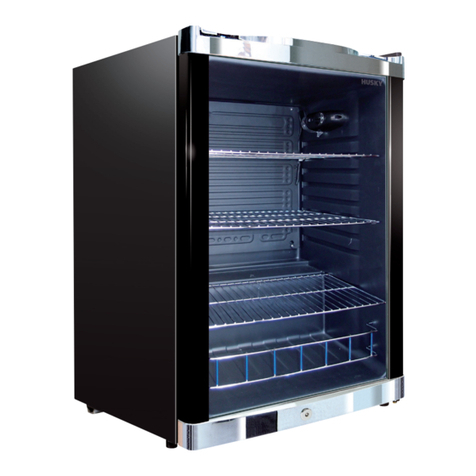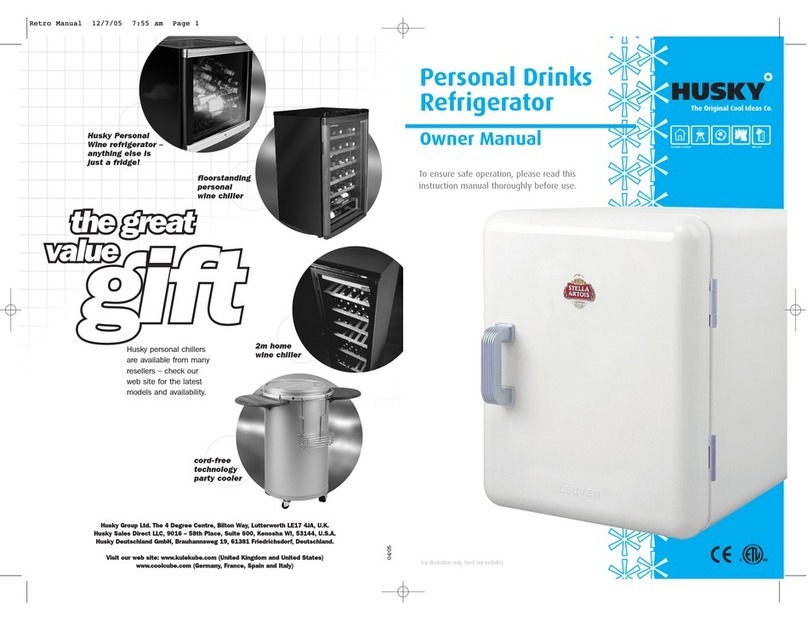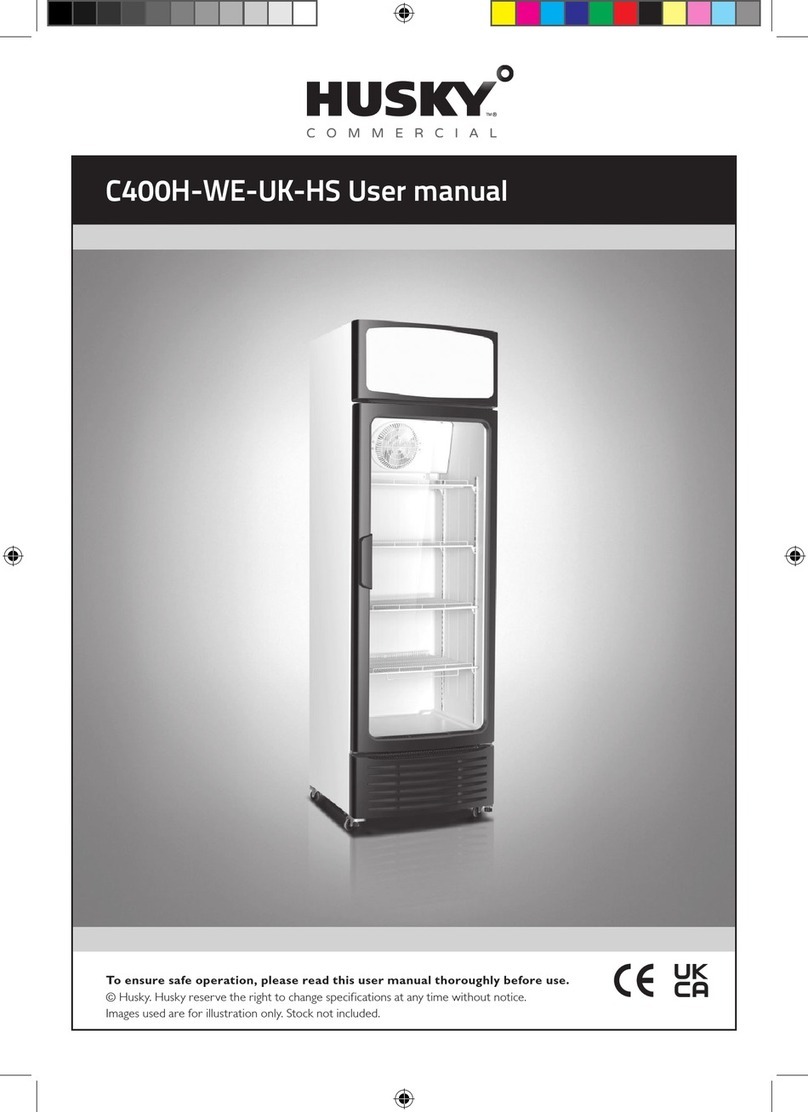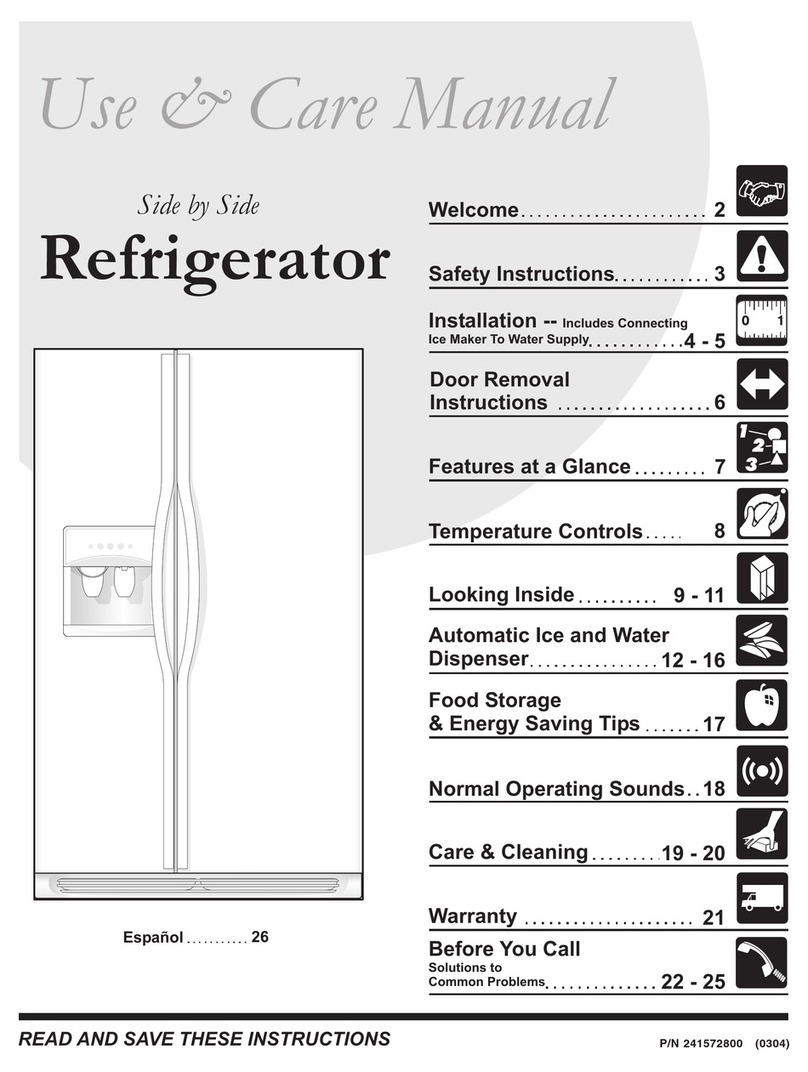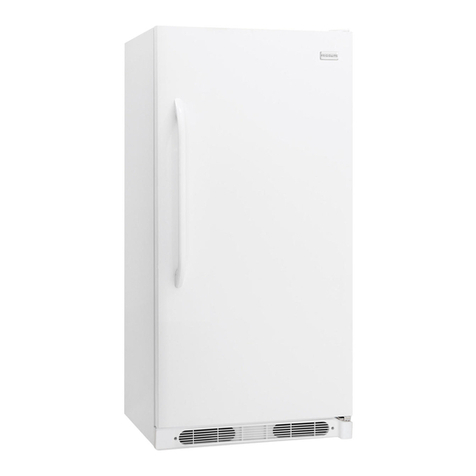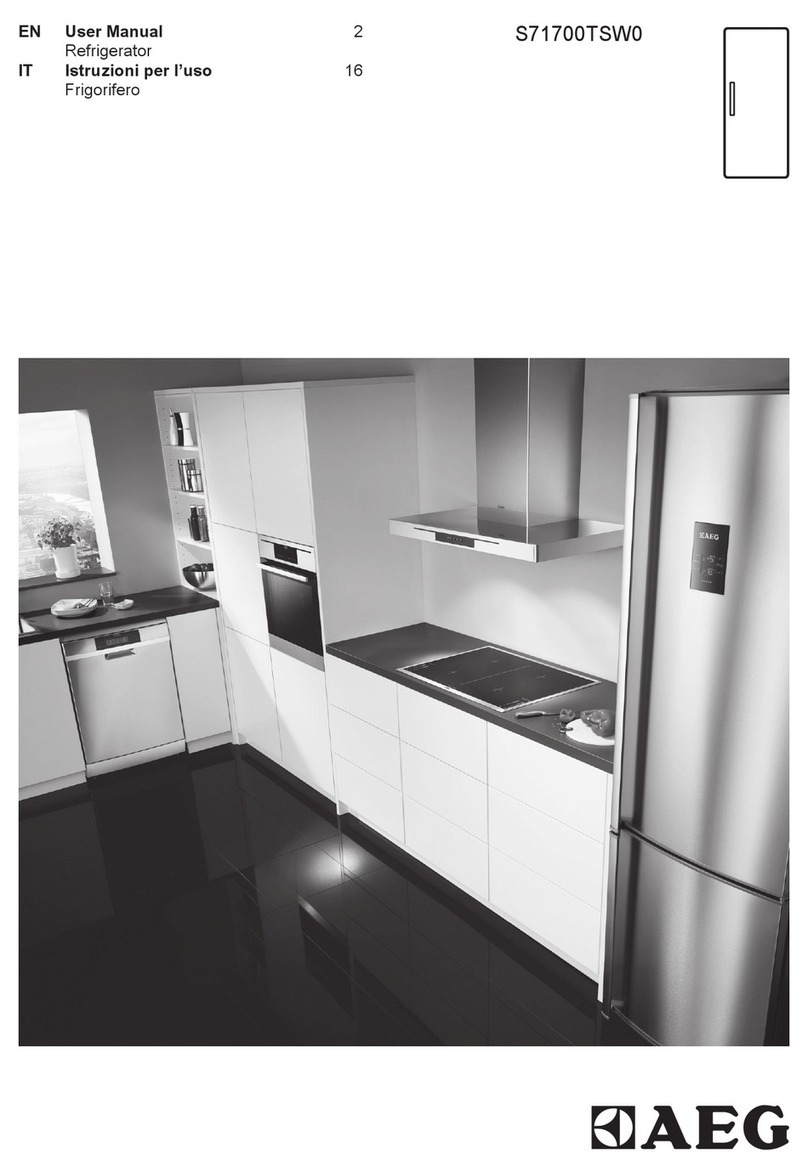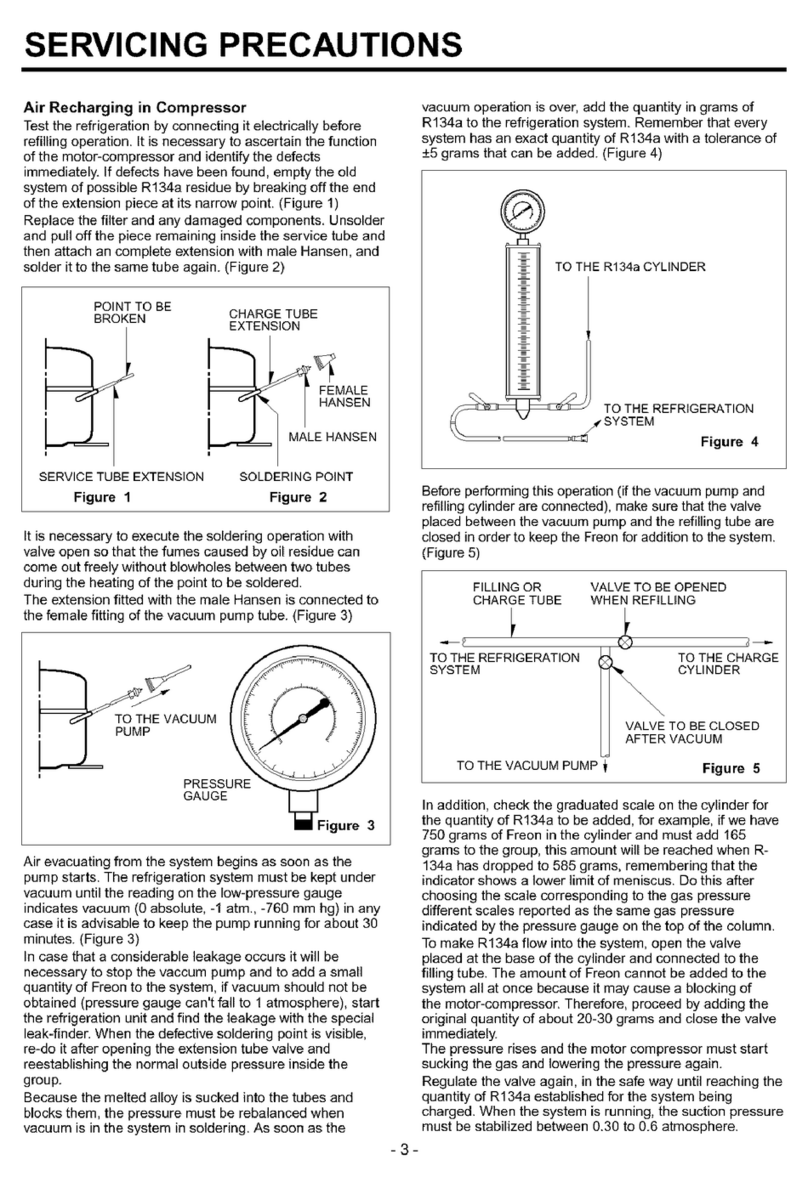— 18 — — 19 —
has come into the compressor cylinder. If it sounds like “dang, dang…“, i.e. a striking sound of metal parts
inside the compressor, this means that some moving parts have loosened (take care to differentiate this sound
from those formed during starting or stopping of the compressor).
b.Listen to the sound caused by the flowing of gas in the evaporator. Open the refrigerator door while the
compressor is in operation and listen carefully to the sound of the gas flow inside the evaporator. If it sounds
like gentle whistling accompanied by a sound similar to flowing water, this is the sound produced by the
normal circulation of refrigerant within the evaporator. If only the gas flowing sound can be heard and there
is no flowing water sound, this indicates that the refrigerant has already percolated. If neither the flowing
sound nor the gas sounds from the evaporator can be heard, this means that the filter or capillary has been
clogged.
3. TOUCH AND FEEL
a. Feel the compressor when running. Its temperature should be generally less than 90°C in its normal state
(though it may exceed 90° C if running for a longer period of time).
b.After the compressor has operated normally for 5~10 minutes, touch and feel the condenser. The temperature
of its upper part should be higher than that of its lower part (or its right part is hotter than its left part,
depending on the type of condenser coil). This indicates that the refrigerant is circulating. If the condenser is
not hot, this means the leakage of refrigerant. In case the condenser radiates heat for only several minutes and
then cools down, this means that the filter and capillary have been clogged. As for the forced air cooling
condenser, hot air will be blown out of it. This means that the system is out of order.
c. Feel the filter’s temperature. During normal operation of refrigerating system, the temperature on the filter’s
surface should be a little higher than the ambient temperature. if you touch it with your hand, you will have a
sense of slight heat. If dew condensation appears (due to the fact that its temperature is obviously lower than
the ambient temperature) this means that most meshes of its screen has been clogged, resulting in an
obstructed flowing of refrigerant, thus causing a drop in temperature due to throttling.
d) Feel the temperature of exhaust gas from the refrigerating system. The exhaust gas should be very hot and
this is the normal working state. For refrigerators with an enclosed type of compressor refrigerating system,
no frost or dew will from on the gas suction tube, otherwise there is something wrong in the system (note
that frosting and dew condensation may appear for a very short time period when just starting the unit, this
is a normal phenomenon). Because a refrigerator is a combination of several components, they are related
and have influence on each other. In case an abnormal phenomenon has been found through the above
checks, you need not make a hasty conclusion based on only one abnormal phenomenon. It is advisable to
find out two or more abnormal phenomenon, or conduct comprehensive troubleshooting with the aid of
instruments or other ways, because several kinds of fault may share a common abnormal phenomenon, and
two or more abnormal phenomena may occur simultaneously due to a certain issue. With this method, you
can reject suspicious faults and arrive at a correct judgment.
ENGINEER’S SERVICE MANUAL HUSKY RETRO REFRIGERATORHUSKY RETRO REFRIGERATOR ENGINEER’S SERVICE MANUAL
ENGLISH
Poor refrigerating effect
The so-called “poor refrigerating effect “ refers to the fact that the refrigerator can operate and refrigerator normally,
but the temperature in the refrigerator cannot drop to the prescribed value under the stipulated working conditions.
Given that there may be many causes for this phenomenon, we are going to discuss and analyse it by the following
aspects:
1. LEAKAGE OF REFRIGERANT
ANALYSIS
The leakage of refrigerant in the system will result in an insufficient refrigerating capacity. The resulting phenomena
are its lower gas suction pressure and exhaust pressure as well as higher exhaust gas temperature. The exhaust tube
feels rather hot, a continuous gas flowing sound that’s louder than usual may be heard at the outlet of the capillary,
and no frost or a smaller quantity of loose frost appears on the evaporator. After shut down, the balance pressure in
the system is usually lower than the saturation pressure corresponding to the same ambient temperature.
REMEDY
In case there is leakage of refrigerant from the system, do not hurry to recharge it with refrigerant, manage to find
out leak points immediately, and make a note of from where it leaks, i.e. welding points and parts. After having them
repaired, recharge refrigerant.
There are so many joints and sealed surfaces in a refrigerator, many potential leak points do exist in the system. In
troubleshooting, pay attention to those parts that are liable to leak. Check main connection points for oil seepage
and tubing for cracks. If there is no severe leak point, charge the system with nitrogen and detect leak points with
the commonly adopted method, repair them, evacuate, charge the system with refrigerant, and then turn on the
refrigerator to make a test run.
2. TOO MUCH REFRIGERANT CHARGED INTO THE SYSTEM
ANALYSIS: Either
a. If the amount of refrigerant charged into the system exceeds its nominal capacity, the superfluous refrigerant
will necessarily take some space of the evaporator, thus reducing its heat-dissipation area and hence the
refrigerating efficiency of the system. The abnormal phenomena caused by this reason are as follows: the gas
suction and exhaust pressures are generally higher than their respective normal values; the temperature of its
condenser is higher and the electric current of the compressor rises; loose frost forms on the evaporator; the
refrigerator temperature drops slowly; and frost appears on the gas return tube.
or
b.If excessive refrigerant has been charged, the liquid refrigerant that cannot evaporate in the evaporator will
return to the compressor, and thus a phenomenon of “liquid striking” will occur. The liquid refrigerant
evaporates and effervesces as soon as it flows into the refrigerating oil at the bottom of compressor. If the
condition is severe, foam will fill inside the compressor housing and be sucked by the piston, causing damage
to the components of compressor.
REMEDY
According to the operating procedures, you MUST to turn the machine off, wait several minutes, then open the
refrigerant charging tube to let the refrigerant escape. Replace the dry filter, recharge refrigerant after evacuating,
and then seal the charging port.
Maintenance Service & Troubleshooting:
7. Analysis of problems, and their solutions
